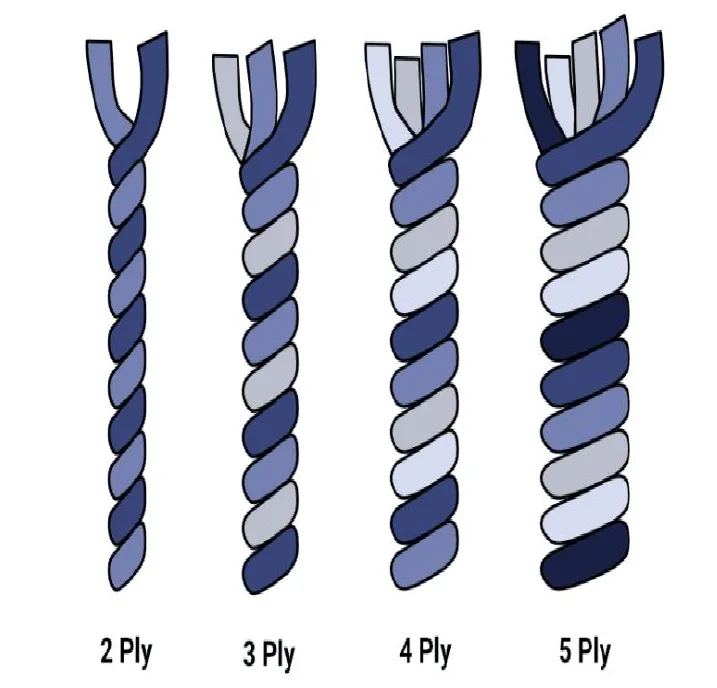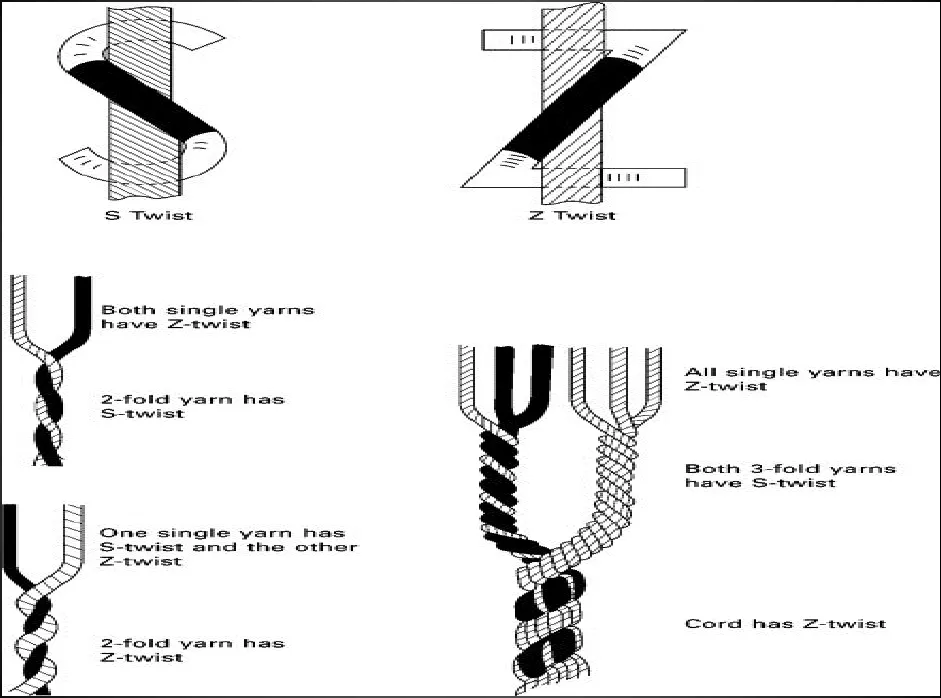5. Double Yarn & Ply Yarn
Double Yarn
Yarn produced by the twisting of two single yarns is called double yarn.
Ply Yarn
-
Ply, plied, or folded yarns are composed of two or more single yarns twisted together.
-
For example, two-ply yarn is composed of two single strands; three-ply yarn is composed of three single strands.
-
Twist Direction: In making ply yarns from spun strands, the individual strands are usually each twisted in one direction and are then combined and twisted in the opposite direction. When both the single strands and the final ply yarns are twisted in the same direction, the fiber is firmer, producing a harder texture and reducing flexibility.
-
Usage: Ply yarns provide strength for heavy industrial fabrics and are also used for delicate-looking sheer fabrics.

Cord Yarn
-
Cord yarns are produced by twisting ply yarns together, with the final twist usually applied in the opposite direction of the ply twist.
-
Twist Direction:
-
Cable cords may follow an
SZSform, with S-twisted singles made into Z-twisted plies that are then combined with an S-twist to make final cords, or may follow aZSZform. -
Hawser cord may follow an
SSZor aZZSpattern.
-
-
Usage: Cord yarns may be used as rope or twine, may be made into very heavy industrial fabrics, or may be composed of extremely fine fibers that are made up into sheer dress fabrics.

Count Calculations
-
Resultant count in direct system (
texordenier), .- Here,
- = Single yarn count.
- = Number of single yarns in the ply.
- For example, a ply consists of two single yarns, each having a count of 20 Tex. Ply Count, Tex.
- Here,
-
Resultant count in indirect system (
NeorNm), .- Here,
- = Single yarn count.
- = Number of single yarns in the ply.
- For example, a ply consists of three single yarns, each having a count of 30 Nm. Ply Count, Nm.
- Here,
Sheer Fabric
- Sheer fabric is fabric which is made using thin thread and/or low density of knit and which results in a semi-transparent and flimsy cloth.
- Some fabrics become transparent when wet.
Acknowledgement
- Reference: Class Lecture